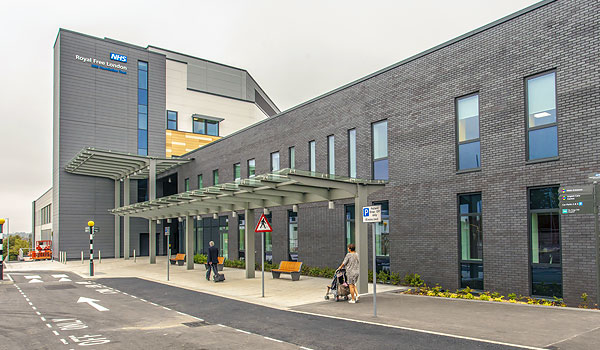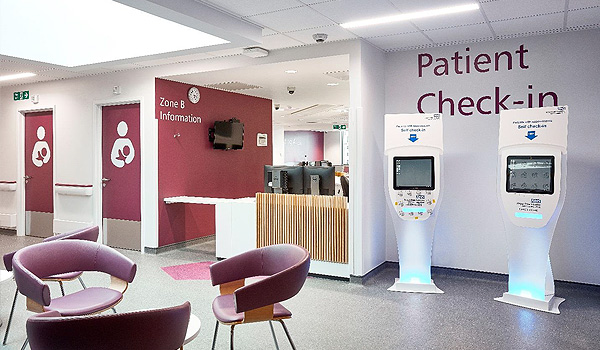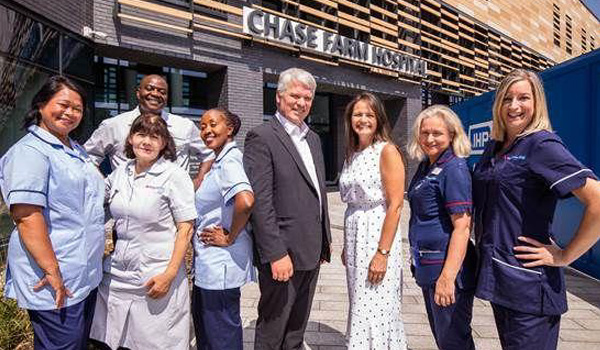Chase Farm Hospital
Facts and figures
- Client: Royal Free London NHS Foundation Trust (RFL) Capital & Estates
- Design team: IBI Group, Troup Bywaters + Anders, Thomasons
- Type of facility: Acute General Hospital
- Contract Value: £150 million
- Building size: 23,000m²
- Pre-construction: July 2014 – August 2015
- Construction: September 2015 – July 2018
Key features
- Conception to completion = 48 months
- Construction start to handover = 34 months
- Use of Repeatable Rooms and standard components
- The combined CO2 emissions equates to an improvement of 45.3% exceeding the 35% target (carbon saving of 116 tonnes/pa)
- BREEAM Excellent forecast
- All parties strategically managed risk collaboratively
- Broad community and stakeholder engagement events
- 130 local children participated in a painting competition with the pictures displayed on the site hoarding
- Single team culture in shared office
Project achievements
It was an absolute pleasure to work with you [IHP] and all the teams involved. You did it! As clinicians we are all very happy with our new accommodation. So you are my stars, please say a big thank you to the team.Julia Chapman - Matron,
Chase Farm UCC
Chase Farm Hospital’s redevelopment was achieved at an unprecedented speed for a scheme this complex and large within the NHS.
Typically, schemes like this take over 10 years to deliver. Delivering a scheme with a construction value of £130m+ in less than 4 years is unprecedented. It demonstrates what is possible with strong leadership and clear direction, true collaborative working across disciplines and more objective approaches to risk management.
The scheme was delivered on time and within budget.
By consolidating services into a single, efficient new building, the Trust released land for disposal. The funding sources roughly break down to a third from sale receipts of the residual site, Treasury funding and Trust capital.
Stakeholder Engagement
Involving the local community and key stakeholders throughout planning and development was critical.
The Trust committed itself to a series of stakeholder meetings during pre-construction, many in public, to share the plans and build support. Extensive pre-planning discussions with the Planning Authority, GLA and Transport for London took on board comments and reflected these in the design. Key health commissioners were invited to be members of the Programme Board, overseeing the development.
To build support of staff and clinicians, the Trust held a series of major events, off-site and attended by over 100 staff. These visioning days looked at what the new hospital could be, started to challenge how things were currently organised and what new models of working could be used to improve care and financial stability.
Innovation and Collaboration
Innovation was at the heart of new model, reflected not only in the design (inclusion of barn theatres and generic outpatient’s units), but also by using IT to deliver a ground-breaking, digital hospital, and new working practices (including 3 session days and new clinical roles).
To assist with planning, utilities and logistics, the Trust’s executive team took the opportunity to move into the same office as Enfield Planning department. The relationships created certainly smoothed the process.
Co-location of the dedicated Project Management Organisation (PMO ) in open plan, on-site accommodation developed strong teamworking, rapid problem solving and shared ownership across the construction and operational work streams.








